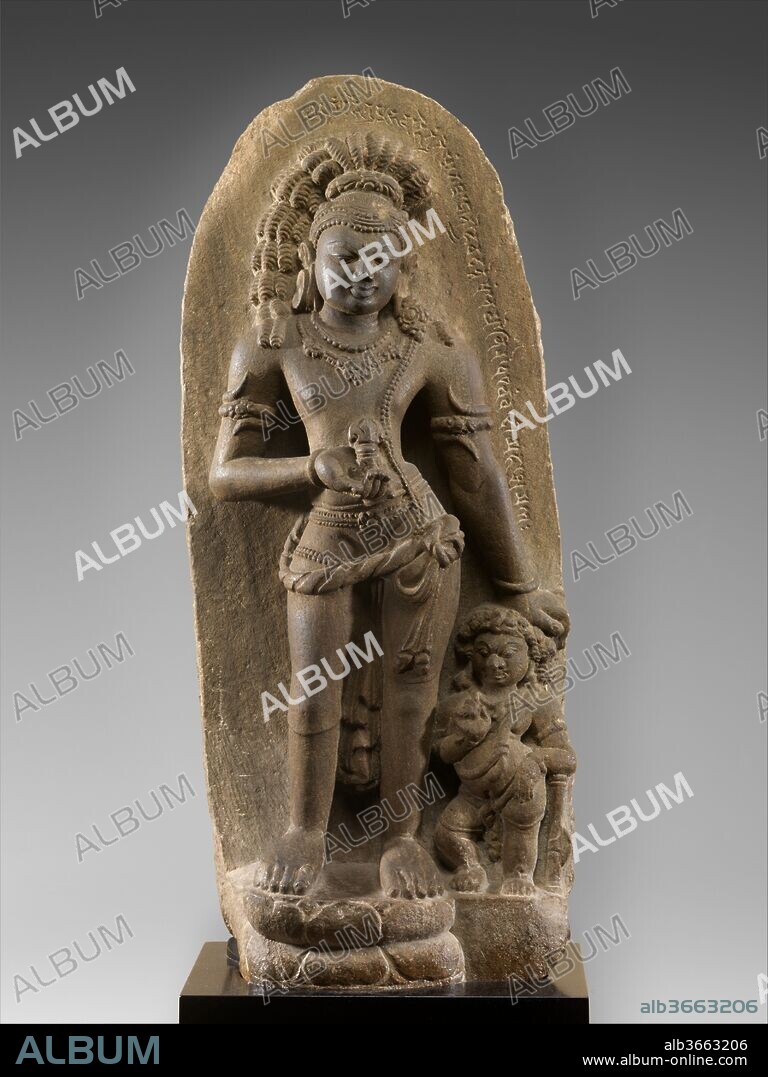alb3663206
Vajrapani, the Thunderbolt-bearing Bodhisattva

|
Ajouter à une autre Lightbox |
|
Ajouter à une autre Lightbox |



Avez-vous déjà un compte? S'identifier
Vous n'avez pas de compte ? S'inscrire
Acheter cette image.
Sélectionnez l'usage:

Titre:
Vajrapani, the Thunderbolt-bearing Bodhisattva
Légende:
Voir la traduction automatique
Vajrapani, the Thunderbolt-bearing Bodhisattva. Culture: Eastern India (Bihar, probably Nalanda). Dimensions: H. 30 7/8 in. (78.4 cm); W. 23 13/16 in. (60.5 cm); D. 6 in. (15.2 cm). Date: 7th-early 8th century.
This is a rare representation of the Buddhist savior Vajrapani from the seventh century or soon after. Vajrapani, the "holder of a thunderbolt" (vajra), shares his origins with the Vedic deity Indra, god of storms. Early in Buddhist iconography, the thunderbolt scepter assumed an independent meaning associated with clarity of pure thought leading to enlightenment. Vajrapani stands flexed holding the vajra in his raised hand, the other resting on the dwarf attendant with a club-axe who seemingly mimics his gestures. Vajrapani has long, unkempt dreadlocks that imply an esoteric aspect to his personality, evocative of Shiva; the large, asymmetrical ear ornaments only strengthen this association, as does the gana-type dwarf guardian. He is best understood as a purusa, a personification of Vajrapani's "weapon," a visualization practice very much in vogue in this period in Hindu iconography, especially in Kashmir. A Sanskrit inscription in proto-Bengali script extends down one side of the stele.
Technique/matériel:
PIEDRA
Musée:
Metropolitan Museum of Art, New York, USA
Crédit:
Album / Metropolitan Museum of Art, NY
Autorisations:
Modèle: Non - Propriété: Non
Questions sur les droits?
Questions sur les droits?
Taille de l'image:
3202 x 4268 px | 39.1 MB
Taille d'impression:
27.1 x 36.1 cm | 10.7 x 14.2 in (300 dpi)
Mots clés:
ART ASIATIQUE • ASIA • BIHAR (INDE) • INDE • METROPOLITAN MUSEUM OF ART, NEW YORK, USA • PIERRE • ROC • ROCHE • ROCHER
 Pinterest
Pinterest Twitter
Twitter Facebook
Facebook Copier le lien
Copier le lien Email
Email
